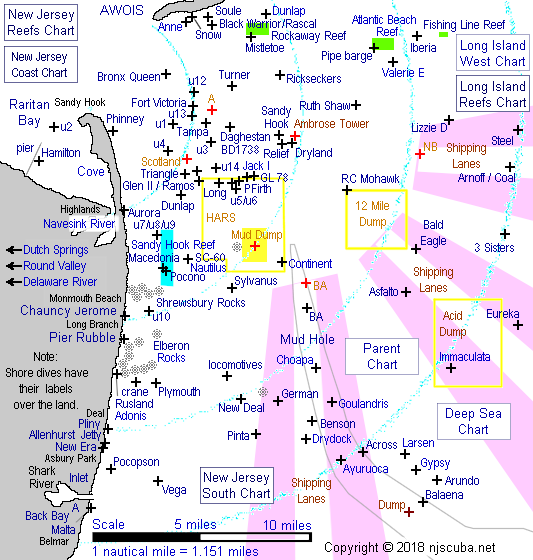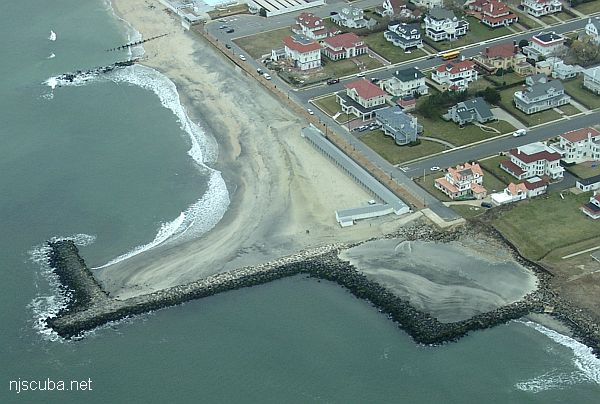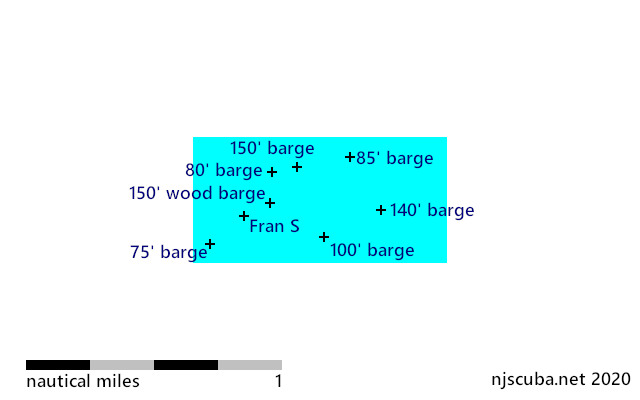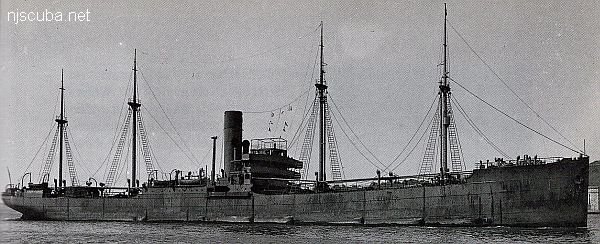Sandy Hook Dive Sites (1/11)
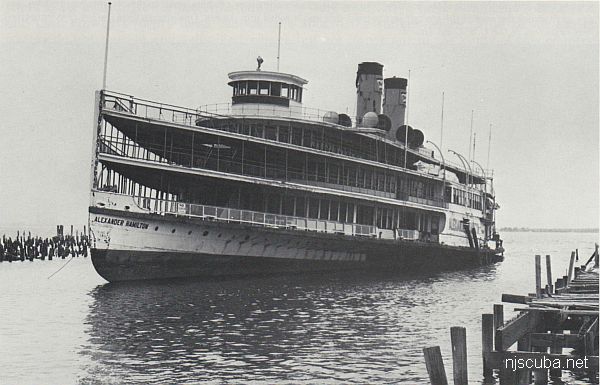
The Alexander Hamilton was the last of the steam-powered side-wheel riverboats of the Hudson River Day Line. Built in 1924, she ceased operations in 1971. A well-meaning group pulled the Hamilton from the mud in 1977 and moved her to a temporary berth along the east side of the Navy pier, planning to restore her as a museum. Unfortunately, at the new more-exposed location, the old vessel was sunk and reduced to scrap by a sudden storm in November of that year. The last records indicate that the wreck is still there, and you can even make out the outline on Google Earth.
More: Alexander Hamilton ...
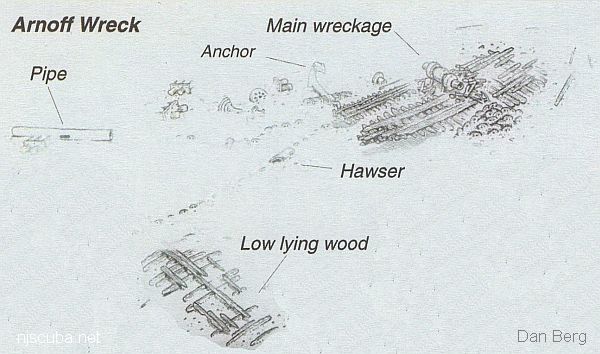
- Type:
- shipwreck, schooner barge
- Specs:
- ( 200 ft est.)
- Sunk:
- late 1800s ?
- Depth:
- 80 ft
More: Arnoff ...
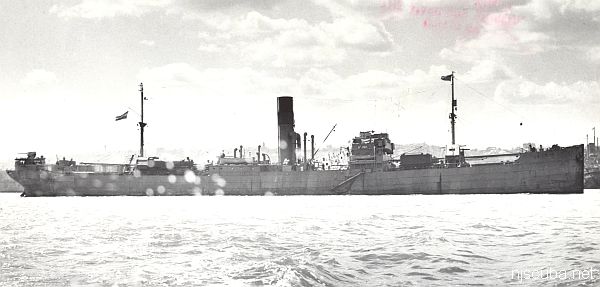
Note the locomotives on deck, foreward of the aft mast.
- Type:
- shipwreck, freighter, Netherlands
- Built:
- 1930, New Castle England, as Petersfield
- Specs:
- ( 412 x 55 ft ) 5163 gross tons, 43 crew
- Sunk:
- Tuesday April 28, 1942
torpedoed by U-136 - 6 casualties - Depth:
- 140 ft max; 110 ft min; 125 ft typical
More: Arundo ...
- Type:
- shipwreck, schooner barge
- Specs:
- ( 330 x 40 ft )
- Sunk:
- March 12, 1932
- Depth:
- 95 ft
Capt. Mick Trzaska of the dive boat CRT II also calls this the "Bomb Wreck", since it once produced a live aircraft-type explosive. A diver had sent it up with a lift bag thinking it was a champagne bottle! How it got there is anyone's guess.
More: Asfalto ...
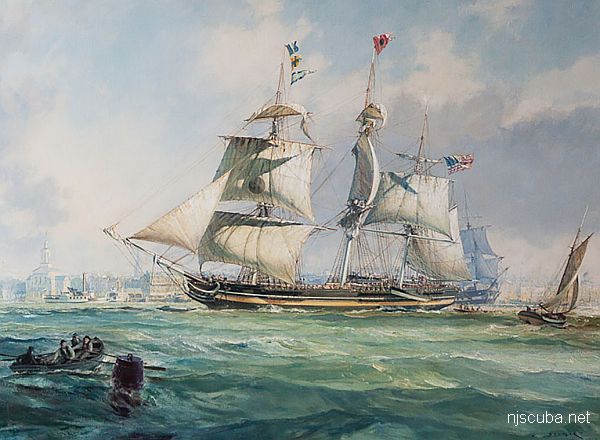
Aurora sailed for the Kermit Line.
- Type:
- shipwreck, sailing ship, USA
- Built:
- 1824, Bath ME, USA
- Specs:
- ( 106 x 22 ft )
- Sunk:
- Nov 20, 1827, ran aground in storm - 6 casualties
- Depth:
- 12 ft
More: Aurora ...

